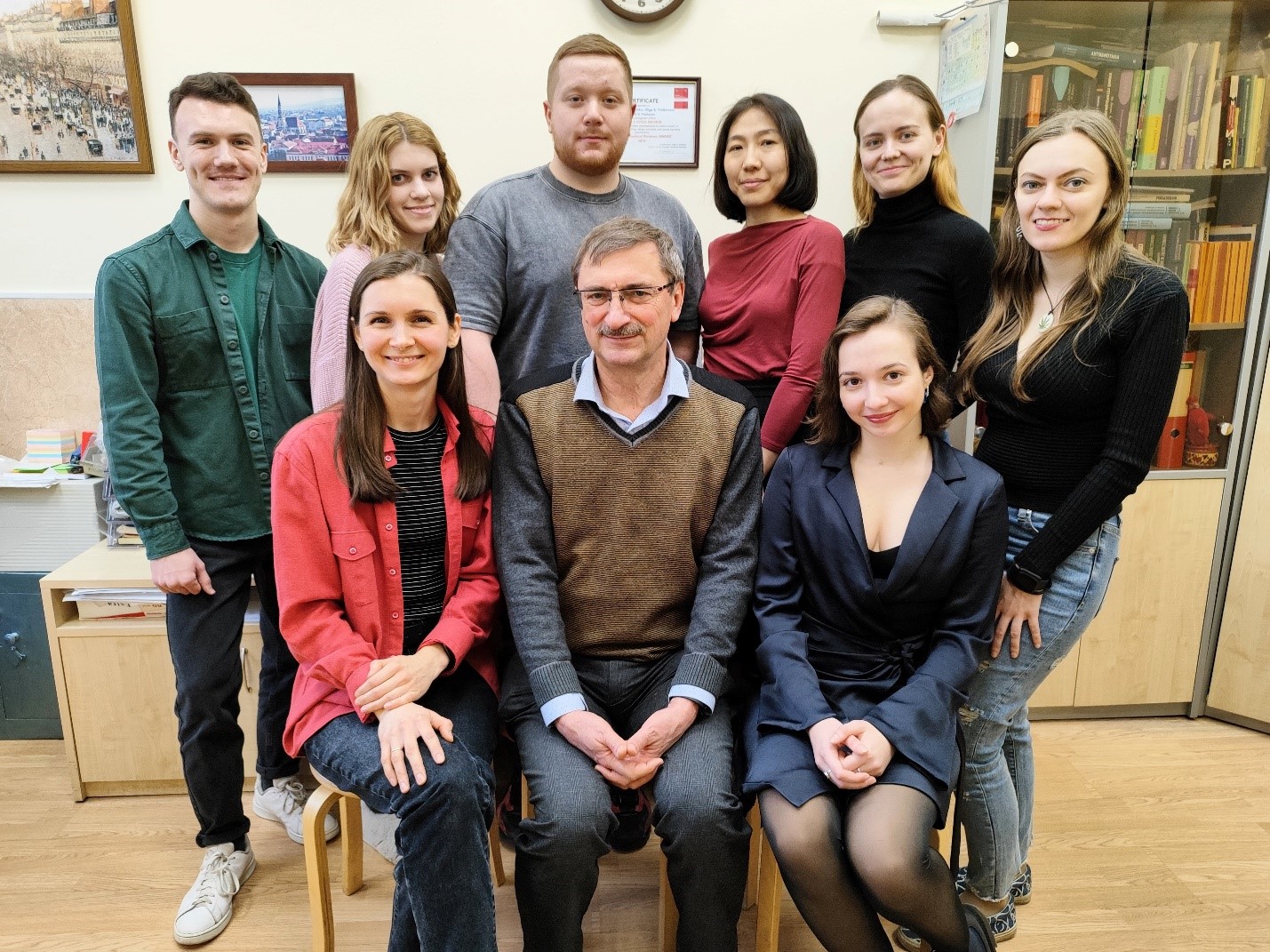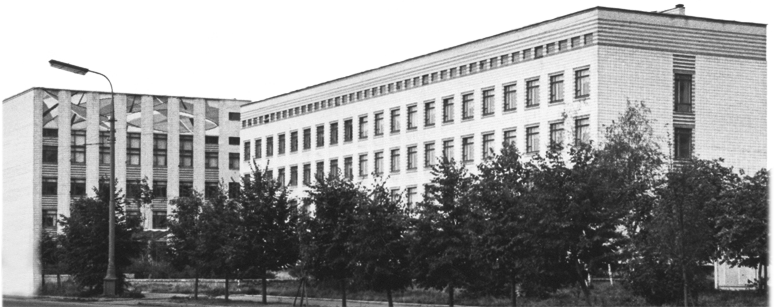
Laboratory employees
| Zubenko Anastasia Dmitrievna |
head of the laboratory,senior researcher, Ph.D. |
| Fedorov Yuri Viktorovich |
leading researcher, Ph.D. |
| Tokarev Sergey Dmitrievich |
senior researcher, Ph.D. |
| Egorova Bayirta Vladimirovna |
senior researcher, Ph.D. |
| Matazova Ekaterina Viktorovna |
senior researcher, Ph.D. |
| Shchukina Anna Alekseevna |
junior researcher, Ph.D. |
| Pashanova Anna Vyacheslavovna |
junior researcher, graduate student |
| Botezatu Anatoly |
junior researcher, graduate student |
| Ikonnikova Irina Sergeevna |
junior researcher, graduate student |
| Tarasenko Oksana Vladimirovna |
research engineer, graduate student |
| Menshikov Mikhail Andreevich |
research engineer, graduate student |
| Mosaleva Sofya Pavlovna |
senior laboratory assistant, student |
| Alekseev Roman Ruslanovich |
senior laboratory assistant, student |
| Kharkovskaya Daria Sergeevna |
senior laboratory assistant, student |
Historical reference
Laboratory for the development of chelators and their conjugates with vector molecules for the production of radiopharmaceuticals #135 under the guidance of Ph.D. Anastasia Dmitrievna Zubenko was established on November 7, 2022 as part of the national project “Science and Universities”. Previously, some of the staff members of the youth laboratory #135 were engaged in research on crown compounds as chelating agents for cations of heavy metals and radionuclides, as part of the Laboratory of photoactive supramolecular systems #107.
Research topics
Laboratory #135 engages in the synthesis of chelators of macrocyclic and acyclic structure, as well as comprehensive studies of their complexation properties with metal cations for medical applications in order to create diagnostic and therapeutic radiopharmaceuticals. For targeted delivery of a radionuclide complex to the affected area, bifunctional chelating agents and their conjugates with vector molecules, such as peptides, antibodies and nanoparticles, are being developed. Our research involves an integrated approach to solving the problem, from designing chelator structure to developing methods for their synthesis and a comprehensive analysis of their characteristics. For this, we use methods HPLC, mass spectrometry, NMR spectroscopy, X-ray diffraction analysis, quantum chemical calculations, potentiometric and spectrophotometric titration, as well as radionuclide labeling, and in vitro and in vivo stability assays. In the course of research, we determine the advantages and disadvantages of new ligands and identify patterns that influence their ability to bind to a particular metal cation. The results obtained make it possible to expand the range of potential new radiopharmaceuticals for the diagnosis and treatment of oncological diseases, which is currently highly relevant.
Scientific projects
- RSF 23-13-00424 “Low molecular conjugates for radionuclide diagnostics and therapy of oncological diseases”, leader Yuri Viktorovich Fedorov
- RSF 23-73-01270 “New N,O-containing crown compounds and their complexes with medical radionuclides”, leader Anastasia Dmitrievna Zubenko
Main publications for 2022-2024
- Zubenko A.D., Shchukina A.A., Chernikova E.Y., Egorova B.V., Ikonnikova I.S., Priselkova A.B., Larenkov A.A., Bubenshchikov V.B., Mitrofanov A.A., Fedorov Y.V., Fedorova O.A. Synthesis of new acyclic chelators H4aPyta and H6aPyha and their complexes with Cu2+, Ga3+, Y3+, and Bi3+ // Dalton Transactions. – 2024. – Vol. 53. – P. 1141 - 1155.
- Shchukina A.A., Zubenko A.D., Fedorova O.A. A novel method for the synthesis of acyclic ligands with combined chelating groups // Tetrahedron. – 2024. – Vol. 150. – P. 133773.
- Shchukina A.A., Zubenko A.D., Karnoukhova V.A., Fedorov Y.V., Fedorova O.A. A New pyridine-azacrown compound py3am and crystal structures of its complexes with Zn2+ and Ni2+ cations // Journal of Structural Chemistry. – 2024. – Vol. 65(3). – P. 561-573.
- Matazova E.V., Egorova B.V., Zubenko A.D., Pashanova A.V., Mitrofanov A.A., Fedorova O.A., Ermolaev S.V., Vasiliev A.N., Kalmykov S.N. Insights into actinium complexes with tetraacetates ─ AcBATA versus AcDOTA: thermodynamic, structural, and labeling properties // Inorganic Chemistry. – Vol. 62(31). – P. 12223-12236.
- Zamurueva L.S., Egorova B.V., Ikonnikova I.S., Zubenko A.D., Pashanova A.V., Karnoukhova V.A., Mitrofanov A.A., Trigub A.L., Moiseeva A.A., Priselkova A.B., Fedorova O.A., Kalmykov S.N. Effect of the type of N-substituent in the benzo-18-azacrown-6 compound on copper(II) chelation: complexation, radiolabeling, stability in vitro, and biodistribution in vivo // Dalton Transactions. - 2023. – Vol. 52. – P. 8092–8106.
- Khabirova S., Aleshin G., Anokhin E., Shchukina A., Zubenko A., Fedorova O., Averin A., Trusov L., Kalmykov S. Novel candidate theranostic radiopharmaceutical based on strontium hexaferrite nanoparticles conjugated with azacrown ligand // Dalton Transactions. - 2023. – Vol. 52. – P. 1731-1741.
- Khabirova S., Aleshin G., Plakhova T., Zubenko A., Shchukina A., Fedorova O., Averin A., Belova E., Bazarkina E., Kvashnina K., Kalmkov S. CeO2-azacrown conjugate as a nanoplatform for combined radiopharmaceuticals // Nanomaterials. – 2022. - Vol. 12(24). – P. 4484.
- Matazova E.V., Egorova B.V., Zubenko A.D., Pashanova A.V., Fedorova O.A., Kalmykov S.N. Thermodynamic and kinetic features of Bi3+ complexes with the azamacrocycles H4BATA and H4DOTA // ChemistrySelect. — 2022. — Vol. 7, no. 44. — P. e202203108.
- Egorova B.V., Zamurueva L.S., Zubenko A.D., Pashanova A.V., Mitrofanov A.A., Priselkova A.B., Fedorov Y.V., Trigub A.L., Fedorova O.A., Kalmykov S.N. Novel hybrid benzoazacrown ligand as a chelator for copper and lead cations: What difference does pyridine make // Molecules. – 2022. – Vol. 27(10). – P. 3115.
Contact details
Tel.: +7(499)135-9280 ext. 1119E-mail:


